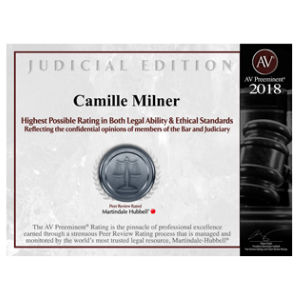
Profound Thoughts About Divorce from Moving Forward: An Ancient Divorce Ritual for the Modern World, by Marilyn Beloff, Ph.D.
“In Israel, the only way to obtain a complete legal divorce and to be able to remarry within the Jewish faith was through participation in the ancient ritual of divorce, the Get, as legislated in Jewish law.” (p. 18). BookBaby. Kindle Edition.
“She [the person having to go through the Jewish ritual of divorce] felt that the Get was ‘just a formality’ that the state of Israel required in all divorces. Only after she went through the ritual and began to look at it from the perspective of her religious background did she realize its importance.” (p. 23) BookBaby. Kindle Edition.
Why Divorce Needs a Shiva
“Ruth, with the wisdom of her age, suggested that the divorce ritual could profit by a small addition: finding some way to concretize and put in place a way to support and encourage the newly single member of the community. She reminded me of the Jewish tradition of the shiva, the seven-day-long time of support for those grieving the death of a loved one. She reminisced about a relative who at the conclusion of her mother’s shiva spoke about the need to resume living and the need for those in the community to continue to gibben traise (to extend condolence and encouragement) to the grieving. Ruth made the following further suggestion: If you could take some of that and put it into the divorce process, if there were a way to give traise – that would be very helpful. I hardly think a party with champagne would be appropriate, but perhaps the family could come over, maybe the next day, so that the divorced person could be given encouragement in some kind of formal way. Ruth added that perhaps the divorced person ‘could come home to some friends or family who would be there for her, to support her in grieving for the death of her marriage.’ While pondering the possibilities for a supportive ritual after the actual Get, Ruth mentioned doing something that would speak to ‘hope and memory, like candle lighting.’ Ruth experienced the power of ancient ritual as a significant way to expedite the demarcation between herself and her former husband. She added that ‘[t]he tradition also sustained me at this difficult moment, like the tradition sustained me at the time of death of the dearest of the dearest.’” (pp. 43-44). BookBaby. Kindle Edition.
Untying the Knot
One lady’s chosen ritual: “[she] enacted the untying of her bonds to her marriage in the following way. First, she gave one piece of rope to each person sitting around the table, explaining that they would be asked to tie a knot which represented one way that she and her husband had been tied together, in both positive and negative ways. She had each person around the table tie one knot, and then, one by one, she held each knot and untied them. While untying each knot, she spoke about ‘how each knot was like a connection that we had.’ She explained to the witnesses that some of the knots ‘were through anger’ and some were ‘through love,’ but they ‘were all connections I was untying.’ Shira emphasized that it was important to her that she perform the physical act of untying while she was talking about it.” (p. 78). BookBaby. Kindle Edition.
Forgiveness
“One particularly relevant part of the ritual was the asking of forgiveness of the other person. I think that until the moment that the Get was happening I don’t think I really understood what forgiveness was. During that ritual, which was very, very powerfully charged, an amazing, loving ritual, I reached inside to answer the question of ‘do you forgive him’? I found an answer like I had never found before, and it was one of those very pivotal moments of something that till then I couldn’t have or didn’t feel. It was pure grace that I was given back. I was given that moment of grace to be able to find whole-hearted forgiveness. That was a ritual that really worked.” (pp. 80-81). BookBaby. Kindle Edition.
Giving Each Other Release and a Blessing to Move Forward
The point of the ritual, Shira stated, is “to be able to come to the point of really being able to bless each other and to be able to learn from the relationship in a way that will make you a more loving person.” The divorce ritual, she held, needed to “have love in it” and be conducted with the “intention of loving each other and freeing each other to a life of more love.” (p. 81). BookBaby. Kindle Edition.
Holding The Tension of Two Opposites, or Being Able to Honor the Good that May Have Come along with the Bad of the Relationship
The message Shira received in the story of Joseph and his brothers was that even the evil done to you can also be “to the good.” This Torah portion illustrated that only when Joseph was able to see that the evil done to him was “for the good” could he find it within him to bless his brothers. This tale, told within her self-created divorce ritual, symbolically affected Shira’s deeper understanding, truth, and healing with respect to the evil that had been done to her within her first marriage. Being able to perceive the tension between the two, the abuse she suffered within her marriage, and the good in the feeling of her newfound strength and “rebirth” helped her to “work through her relationship,” and “face her separation” as something that would ultimately be “for the good.” As a result, she, like Joseph, was able for the first time to move to a deep place within herself where she could forgive, release, and finally bless the man who had hurt her so deeply. (p. 83). BookBaby. Kindle Edition.
The second part of Shira’s story that had a profound effect on me was her understanding of the positive aspects of being able to hold the tension of opposites. As one whom others joke about as being the “holder of the tension of the opposites,” I have often felt that carrying this tension puts one in a difficult position, creating not only further tension, but also difficulties in moving forward that would have been more possible should I have been able to settle on “one side” or the other. Shira’s story provided the impetus for embracing the notion of holding the tension of opposites; as a result, I look forward to receiving the good that may come. (pp. 84-85). BookBaby. Kindle Edition.
The Difference in Ritual versus Court Finalization, Therapy or Mediation
The Importance of the Sacred in the Divorce Ritual. For Shira, the sacred distinguishes the power of the healing divorce ritual from what is experienced within therapy or mediation. A true ritual, Shira states, takes place in a sacred setting, and it is only within this setting that healing can take place at “all levels.” The powerful healing she experienced with forgiveness, she maintains, could only have been “harvested in a sacred setting.” (p. 84). BookBaby. Kindle Edition.
The Value of Containing and Facing Our Pain Rather Than Running From it?
Could all of us going through a painful divorce do better if we were to contain and face our pain rather than run from it? Could we, through our suffering and support for others who are suffering, allow ourselves to feel our pain, to move through it, and emerge into our new lives as single people, more ready to love more completely? (p. 92). BookBaby. Kindle Edition.
Rebirth After Divorce
What if we, as a culture, honestly faced the death and fragility of our relationships and our truths surrounding divorce, giving divorce its due through a formal rite of passage? What if, instead of hiding our faces in shame and denying our truth, we acknowledged the fear and pain at the death of our marriages and held expectations for healing, transformation, and rebirth as healthy, strong people, rather than continuing to pathologize divorce and those who are divorced in our culture? What if we allowed ourselves to consider the gifts, wisdom and perspective of the ancient sages who viewed divorce as a tragedy, but also believed it to be a mitzvah (sacred obligation) to release the other, free to move on and to love again? What would this do to our on-going guilt, shame, and fear, as well as to the way in which we say goodbye and move forward with our lives? What if our culture, and the individuals living within it, were to support this view with creative ritual and ongoing support for those going through the process of rebirth after divorce? (p. 94). BookBaby. Kindle Edition.
The Collaborative Divorce process offers a process that lays the foundation to end the marriage in a healthy and compassionate way and sets the table for such a ritual as Dr. Beloff has shown in her book and video. If you or anyone you know must go through a divorce, please ask them to explore the option of Collaborative Divorce.











